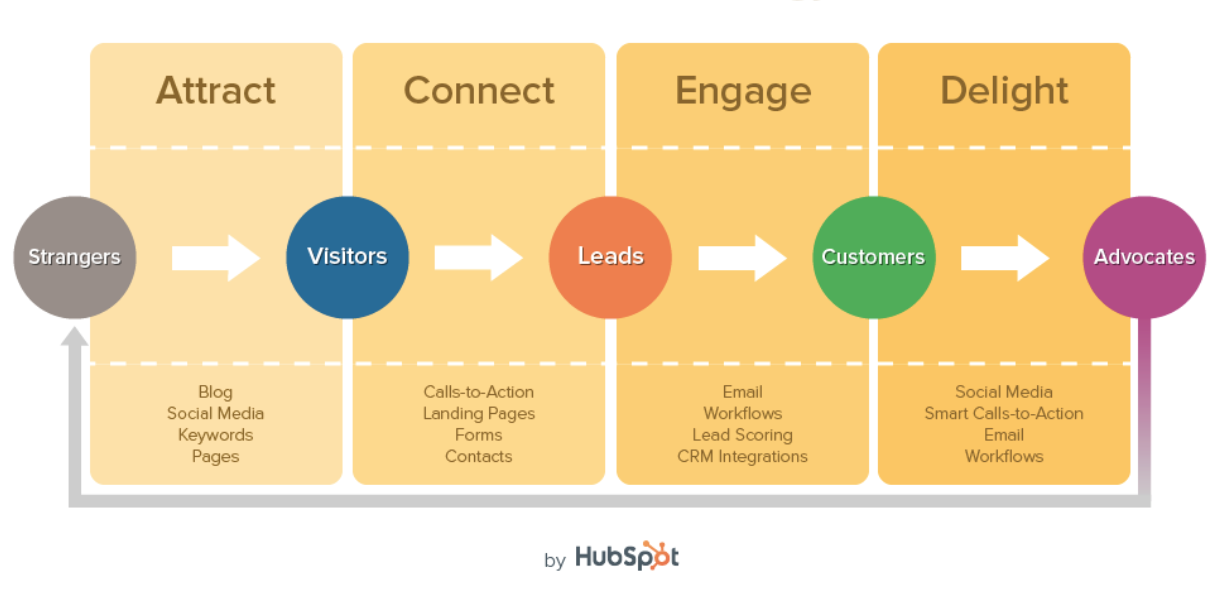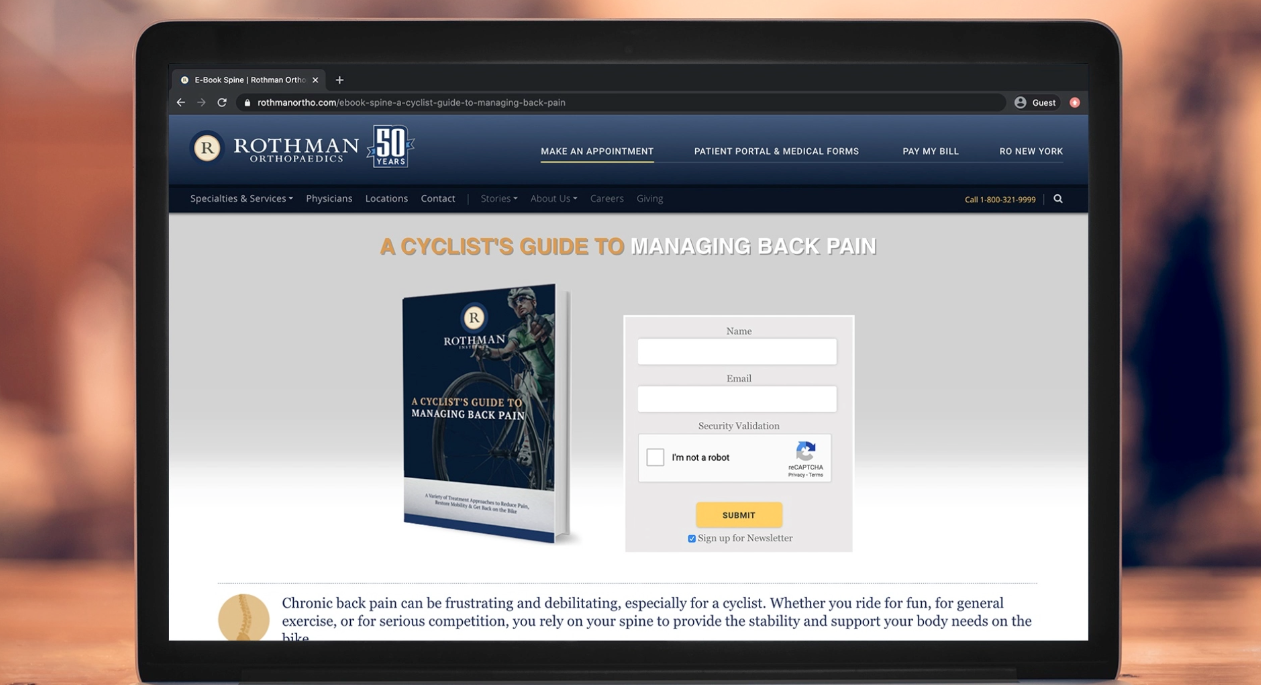4 Steps to the Ultimate Content Strategy for Website Domination
How Do You Create a Content Strategy That Will Bury Your Competition?
Your company’s content strategy framework should work hand-in-hand with SEO. But so much of a good approach is about establishing you and your company as a thought leader in your industry. And, building that thought leadership is all about engaging potential clients with your brand.
Ultimately, the whole process is about your bottom-line marketing goal: conversion.
In this article, we break down the goals and factors of a content strategy for website success!

4 Goals for a Solid Content Strategy for the Web
- Write Great Content in a Variety of Formats
Your first goal is to be able to develop quality content and publish that content in a variety of locations.
What is content development? To begin, content strategy isn’t just about keeping your blog consistent (although that’s a big factor). It’s also about developing new site pages, adding new video content, creating offers, and much more.Don’t forget that all of your content should be optimized for SEO, which means each new page should target a particular keyword that you’re going after. - Push Your Potential Clients Down the Sales Funnel
As we mentioned earlier, marketing is ultimately about conversion, and the path to conversion is through the sales funnel process. It’s not efficient just to produce content for content’s sake. You need each new blog and each new site page to have a purpose in engaging a particular kind of prospect in their specific spot in the buyers’ journey. This means you’ll be producing and strategically placing awareness-level, consideration-level, and decision-level content throughout your site and social platforms. What is content strategy for a website all about? As HubSpot puts it, you want your potential clients to go from strangers to visitors, to leads, to customers, to brand ambassadors! - Collect User Information to Build Your List
At the bottom of the funnel, your work is still not done. It’s there that you want to present your user with a compelling offer, or what we like to call a “content upgrade.”
This content must be high quality. Why? First, there’s a whole lot of content out there—that means yours has to be special in some way in order to add value. Second, your content must be appealing enough to entice a site visitor to trade their contact information in order to download it. We can’t stress enough how imperative it is that you invest time in creating really valuable downloadable content for this purpose.This is where your well-designed, strategically-placed landing pages (or “squeeze pages”) are essential. Even if consumers don’t love these kinds of pages, the days of getting free or “ungated” content are over.The valuable lead data you collect through forms allows you to populate your CMS and therefore provides fuel for your marketing automation.This leads us to our last goal…
- Use Your list to Implement Marketing Automation That Generates Conversion
Here’s where the benefits get good. Business 2 Community (B2C) cites research that shows that businesses who use marketing automation to nurture prospects experience a 451% increase in qualified leads. And, according to a report from the Lenskold Group, 80% of marketers credit automation as one of the biggest contributors to their success.So, how does this work? When a site visitor completes a form to download gated content, they also get a tracking code or a “cookie” on their computer.Take Timothy, for example.
When he found a local orthopedics practice through the search term “spine specialist in Philadelphia,” he filled out a form and a cookie was placed on his computer. This technology not only tracks everything he does on that site moving forward, but it also sees the history of his activity in the past.
In addition, Timothy will have a retargeting cookie dropped on his computer as well. This means ads for the orthopedics practice will follow him even after he leaves their site and is browsing around the web elsewhere.
At this point, marketing automation begins. Analytics software allows the orthopedics practice to see which emails Timothy has opened—and which he has not. In this example, let’s say he engaged with two out of three emails and then went on to sign up for the practice’s newsletter.
This process yielded Timothy a lead score of 80, which indicates the level of warmth of the lead based on their activity on the site and engagement with the brand’s content.

Your Content Strategy for Website Marketing Starts Here
Before the four steps above can be effective, you have to first invest some time into developing buyer personas, establishing a strategic sitemap, and generating qualified traffic. All of these steps are directly related to your sales funnel, and are critical pieces to answering the question, “What is in a content strategy?”
We’ll explain more below.
Buyer Personas
You need to understand exactly who you are marketing to. These profiles of potential clients are called buyer personas and they help you to develop content that will get the right message to the right client at the right time.
Sitemap
In the process of outlining content for your web pages, you need to consider two factors:
- Your sitemap itself should account for the need for all three levels of buyers’ journey content: awareness, consideration, and decision levels. Develop pages to specifically target each of these types of visitors to your site, and to push those visitors farther down the funnel as they jump from page to page on your site.
- Using the technology of tracking codes, set up marketing automation that can kick in depending on which page of your site a visitor last views. Here’s one content strategy example:

Let’s say a site visitor leaves after viewing a consideration-level page on your site. Plan to have an email automatically generated that would include a 30-, 60-, or 90-second video with an invite to engage with decision-level content, such as a form to request a consultation.
Note: Marketing automation can involve other forms of content, but email sequences are the most popular. According to Hubspot’s Ultimate List of Marketing Statistics for 2020, email marketing has the highest return on investment for small businesses.
Qualified Traffic
Develop lead generation sources through SEO, video marketing, paid ads, outbound marketing, etc. These efforts will bring quality traffic to your site, which is where the engagement with your content begins.
How Do You Create a Content Strategy?
Companies commonly fail at content marketing because it is so time-consuming. That’s why we believe that content marketing done right involves the help of a team-based agency that can become the time you never had. Our team works behind the scenes constantly for our clients to make sure their content strategy framework is organized and implemented.
Interested in discussing how a solid content strategy for your website can truly transform your marketing? Fill out this simple form to request a free consultation with us!
